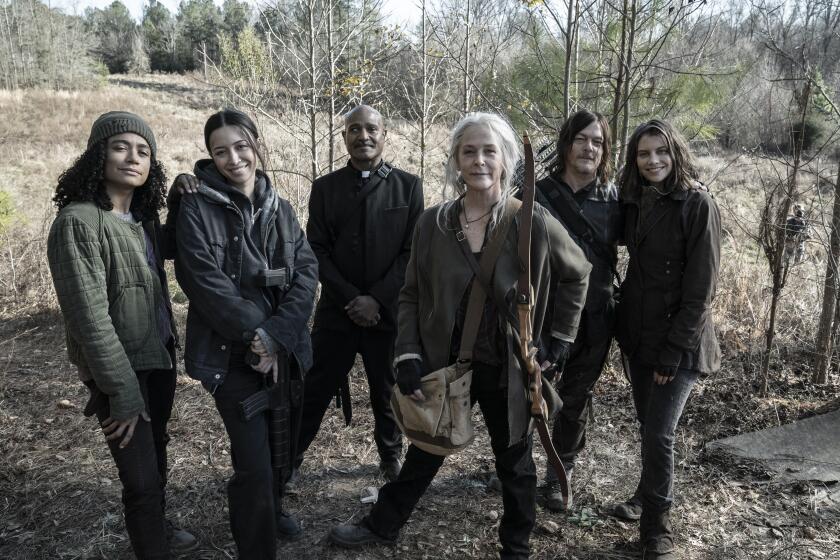‘Daryl Dixon’ is a different flavor from ‘Walking Dead,’ serving up a cinematic trip through France
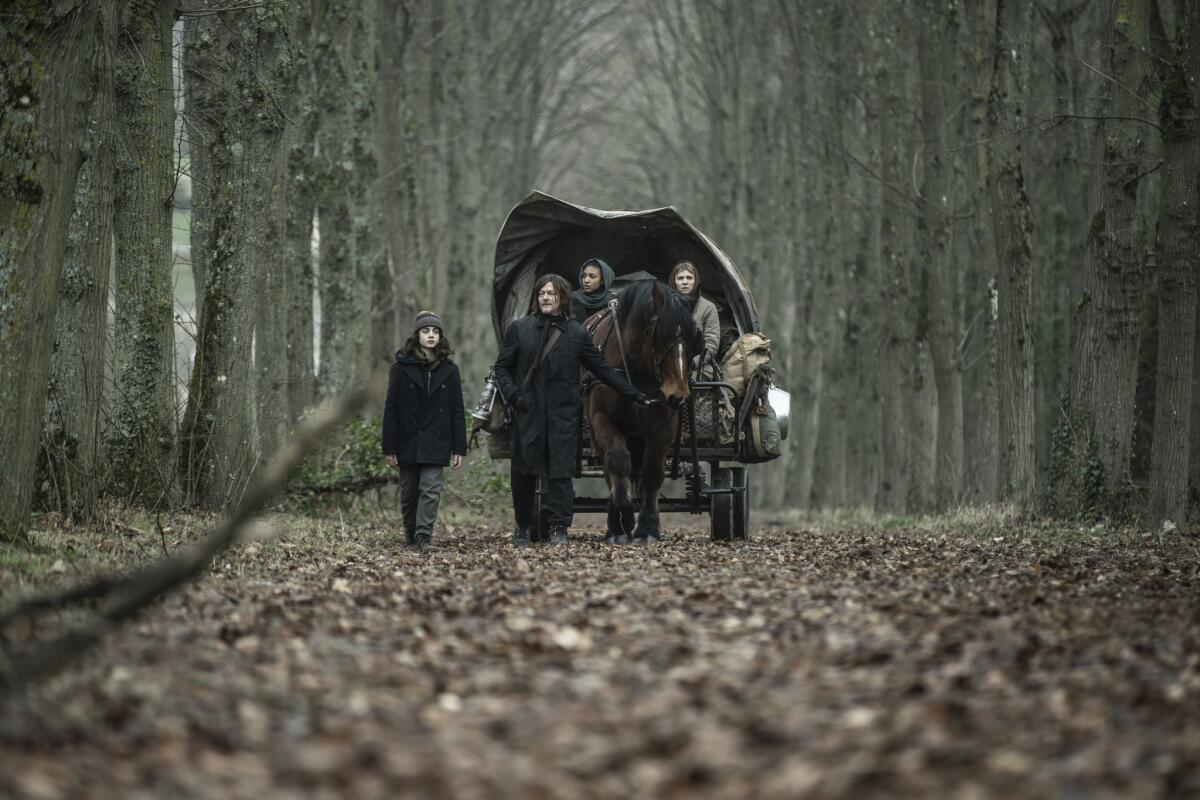
- Share via
“Walking Dead” fans hungry for more of the same from France-set spinoff “The Walking Dead: Daryl Dixon” will be served a very different dish, at least cinematically. Vive la différence!
The new show’s filmmaking ambitions — its appetites — are divergent. In an Entertainment Weekly interview before the SAG-AFTRA strike, star Norman Reedus (who is also a painter, sculptor and photographer) said, “We’re making art. ... It’s a different animal and it’s beautiful, it’s touching, and it’s sort of amazing to look at and listen to and watch and feel.”
Season 1 only approximates what executive producer and longtime “Walking Dead” fixture Greg Nicotero says was Reedus’ initial idea of Daryl as a lone wanderer, meeting and helping people on his travels à la “Kung Fu” or “Then Came Bronson.” But if its plot can be summed up as a “reluctant hero shepherding the golden child” road movie — yes, similar to many others, including recent hits like “The Last of Us” — its look and feel is unlike anything else in the distinctly American “Walking Dead” universe. Apart from cornerstones Reedus and Nicotero, and new-to-”Dead” showrunner David Zabel, many key collaborators are European. And it shows.
“It wasn’t about driving past cool locations” in France, says Nicotero, “but embracing Daryl’s journey from Marseilles through Lyon and up to Paris, and ultimately Normandy. The production design, the cinematography, the way that the show was shot was very different than the way that we shot the show in Atlanta.”
They made it to the final episode: 10 key members of ‘The Walking Dead’ family remember the most important moments as AMC’s hit zombie show signs off.
Daniel Percival, who is British, directed four of the six episodes of Season 1. “I come from a very different tradition,” he says. “I’m a European filmmaker, really, as is Tommaso [Fiorilli, the Italian director of photography who shot Percival’s episodes]. So it was exciting that they really wanted to push the envelope of the approach and style, to boldly be very cinematic with it.”
There are other differences, too. While “TWD” typically had 16-episode seasons (the final season reached 24), Season 1 of “Daryl” is a tight six installments. And whereas “TWD” was often marked by long speeches, the dialogue seems sparse by comparison in this series.
“In the first, I think, almost 15 minutes of the show, there’s not a breath of dialogue apart from [Daryl recording a voice note], and Episode 2 is the same way,” Percival says. “David’s writing is very cinematic. I thought, ‘I love this. He’s writing visual narrative storytelling as an experiential narrative, as a singular odyssey. Let’s go, cinema!’”

The visual storytelling is a far cry from “TWD” — Nicotero says the touchstone was George Romero’s budget classic “The Night of the Living Dead” — and listening to Percival and Fiorilli talk about what inspired “Daryl Dixon” makes it sound like “Jean de Florette” avec zombies.
“A lot of the great British and French directors, when they approach a landscape, they treat it like a character, like a personality. Think of David Lean and the way he places people in an environment, and [Claude Berri,] the director of ‘Jean de Florette’ and ‘Manon des Sources,’” says Percival. He cites German director Wim Wenders, too, for “a lot of those very close, wide frames on a face in the landscape, and certainly cityscapes from ‘Wings of Desire’”
Percival also lists Mexican filmmakers Alejandro González Iñárritu and three-time Oscar-winning cinematographer Emmanuel Lubezki as major inspirations for “Daryl.” Fiorilli says he lifted an idea to illuminate a dinner scene by only using candlelight from another Lubezki work, Alfonso Cuarón‘s “Children of Men” (a “reluctant hero/golden child” story), and that his lens choices were inspired by the Iñárritu-Lubezki collaboration “The Revenant.”
“Part of the interest of this show was the location: France,” Fiorilli says. “But even just for talking, I would tend to use very short lenses. We decided to shoot with anamorphic lenses — it allows me to have a very short lens and it doesn’t look like a short lens. It doesn’t deform the faces.”
Spherical lenses are much more common for TV; anamorphics are used for certain “cinematic” looks often involving depth of field. Percival notes that since anamorphic lenses yield a wider, more cinematic aspect ratio than standard television fare, “If you were to take our dailies, they would be in Scope” — CinemaScope, the super-widescreen format. They then crop to a more TV-friendly ratio, “but you still [feel] the width of the frame. We’re future-proof: If we ever want to put this out in Scope, you’ve got a Scope version.”
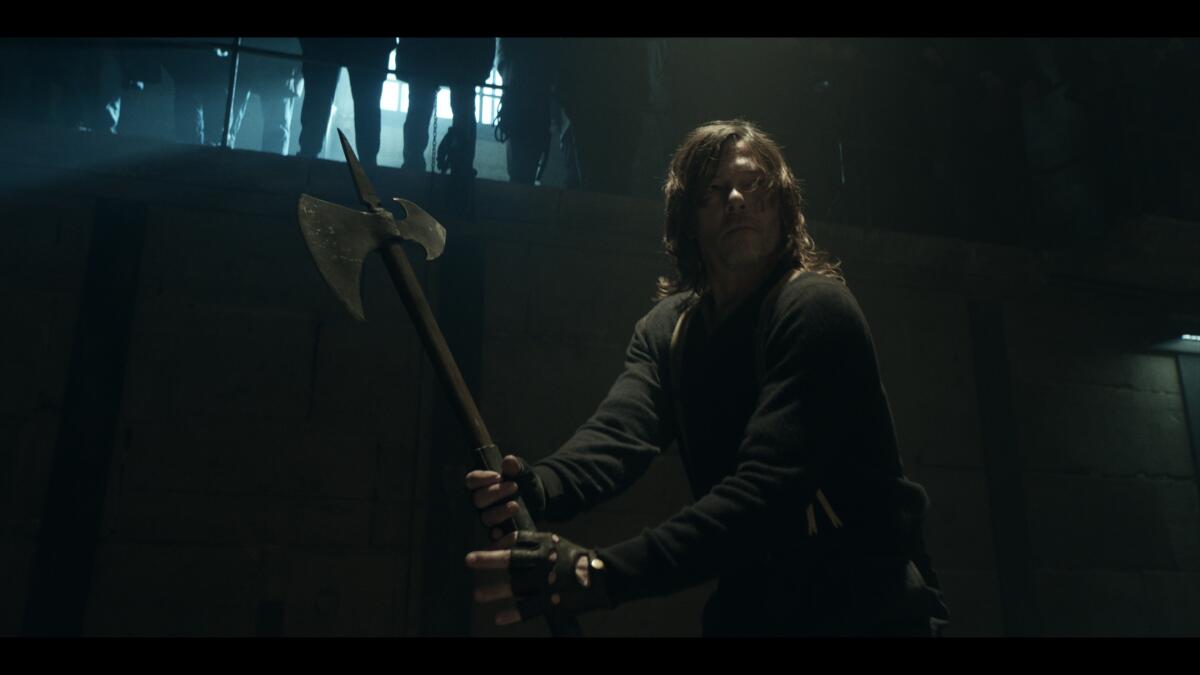
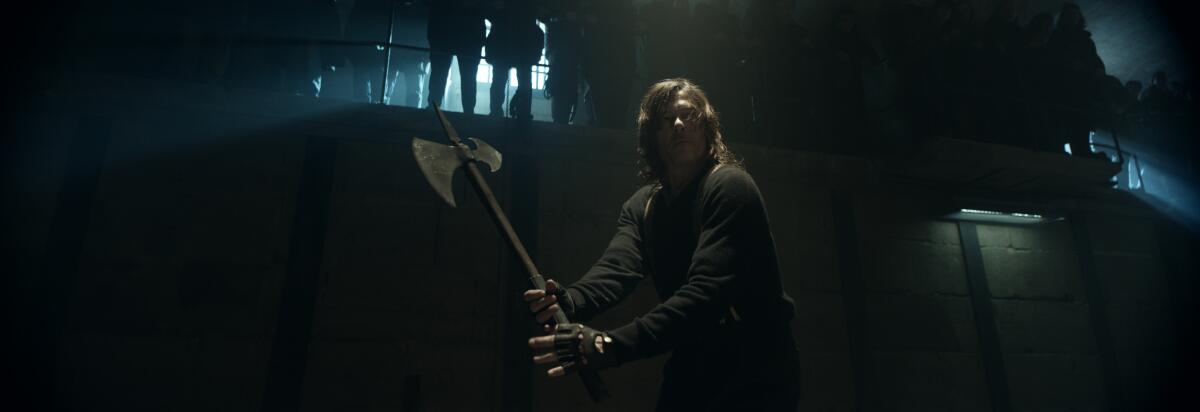
Moving fluidly through a broken world
There are plenty of cinematically adventurous shows in the streaming era — “Barry,” “Atlanta” and “The Bear” come to mind — these flavors aren’t new. But they’re new to “The Walking Dead.” Perhaps you can teach an old zombie new tricks.
“I really enjoyed working with the European team because they have different perspectives on the way they film things,” Nicotero says. “I don’t think we ever set up a dolly track, ever [for ‘Daryl’]. We talked about developing shots, where you get little bits and pieces of information as a shot develops. So we used Steadicam in almost every setup, which was very different than the way ‘The Walking Dead’ was conceived.”
Steadicam is a camera-stabilization system that allows handheld operators to move freely through environments, rather than being restricted to dolly tracks, while still providing smooth, non-jittery images.
“‘The Walking Dead’ was sometimes intended to be a play, where the people were there and the cameras would be on dollies; they wouldn’t be moving fluidly through landscapes and locations,” says Nicotero. “So that was one of the first things that I noticed — the use of Steadicam in almost every scenario to allow the audience to absorb a lot of information as the camera drifts around the set and in between characters.”

“I have a very close relationship with my Steadicam operators, and I just say, ‘Go with it,’” Fiorilli adds. “When I’m operating — I love operating — I see what the actor is doing and for me, it’s a ballet. I try to do following shots. I cut when it doesn’t work anymore. If I do a master shot, I’ll do a master shot for the whole scene. It gives a really good continuity to acting. They’re actually playing the scene, not just bits of it. So it was giving them a lot of freedom.
“Sometimes you see shows — wherever [actors] are, they have the same light. I like to light spaces rather than people, so I create an atmosphere. It gives diversity because when you move, the light changes.”
Art, naive and disturbing
Production designer Clovis Weil, who is French, says Zabel gave him freedom to experiment with the sets and locations. “There are a few things you expect, which come with the [‘TWD’] universe: Decay, overgrown nature everywhere, trash, destruction.” However, he says there were many ways to play with that aesthetic.
“One of the things I like about the apocalypse is it allows you to create contrast,” he says. “In the market [in Episode 1], we have a former stand that sold bathing suits. So you have these silhouettes of a plastic female bust with a little bikini on her, and you have the zombie just next to it.”
Weil says a lot of inspiration came from art, saying he likes to conceive of sets as a 360-degree painting. “I took many references in contemporary art about accumulations,” he says. “I went to [conceptual artist] Christo. We had places with accumulations of trash, of cars, people keeping things to themselves. I don’t have names in mind, but for the rooftop camp, Korean artists that did things with scaffoldings. And playing with the transparency of the materials.”
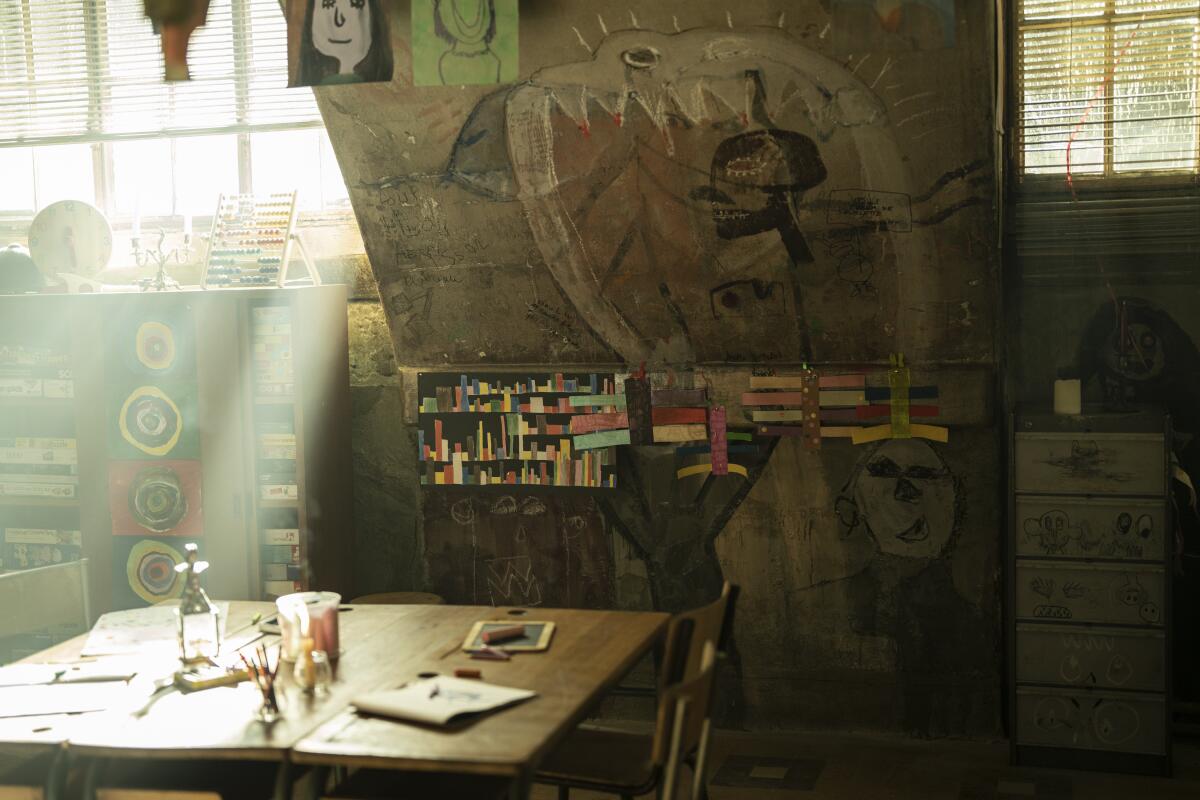
One of the key locations is a school where children have lived without parents since civilization fell more than a decade earlier.
“For the school, I was inspired by an artist called Roger Ballen, who did some very disturbing, childlike paintings,” says Weil. “They have a very naive feeling, but very disturbing. For this community of small kids that since the age of 4 or 5 were abandoned, it was nearly like paintings in caves. We don’t see that much in the show, but at least it gives a feeling. They tell their story on the walls.”
‘Postcards of French apocalypse’
For “Daryl,” Nicotero says they wanted to emphasize the French landscape and avoid lots of shots in the woods, which were prevalent in “TWD.” “We wanted to lean into the breathtaking elements of Europe with the shots of Daryl landing in Marseilles, walking towards the city on the train tracks and crossing all those beautiful landmarks,” he says. “I shot those because I wanted to immerse the audience in that world. They have to feel the surroundings. It has to be big and wide. We used a lot of drone shots, way more than we ever used on ‘The Walking Dead,’ to illustrate the majesty of the countryside.”
“One of the things about the American series is you’re forever in a kind of nowhere zone of neutral Americana that’s decayed, or in a forest,” says Percival. “You’re always somewhere in Europe. You’re stumbling over ruins, buildings that have stood for 2 or 4,000 years, as you see in the opening with the Roman aqueduct or the great abbeys. You don’t have wilderness; you have the history of humanity littered around you.”
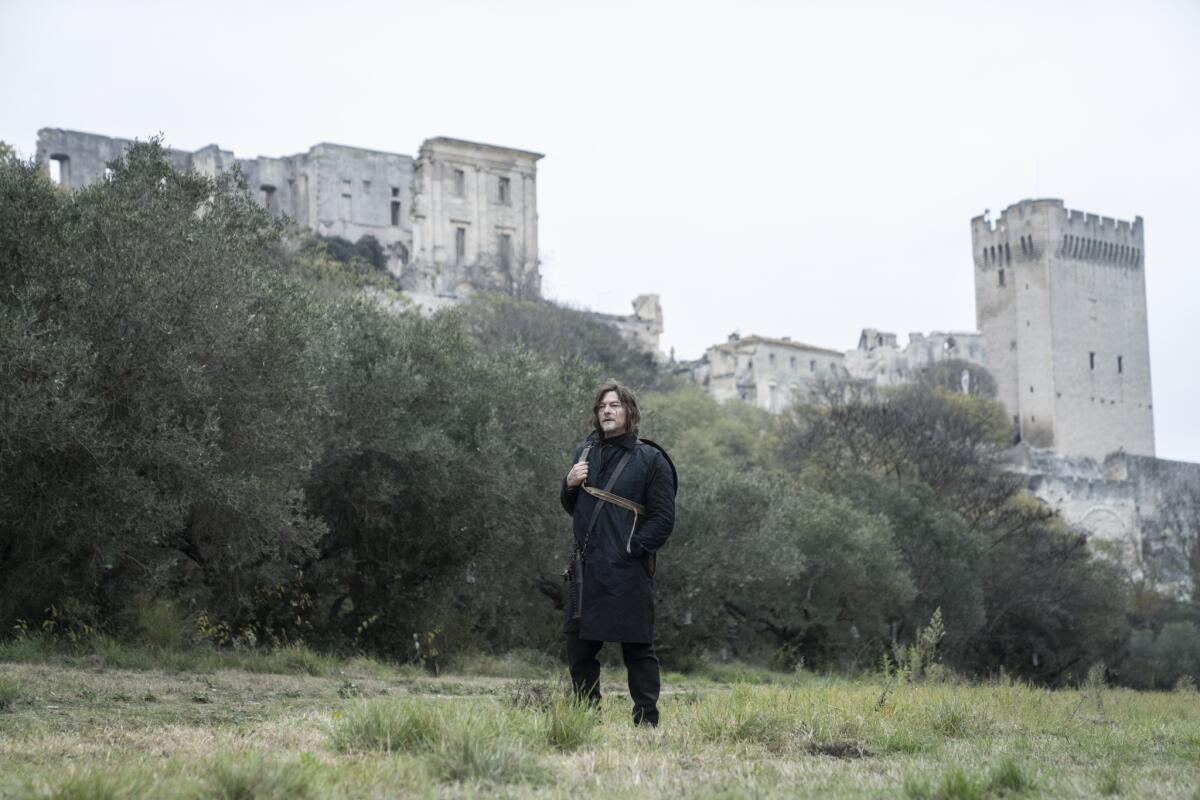
Weil says the creators wanted to see an array of French cities and notable places in the series. “They wanted scale, they wanted scope,” he says. “Everything is Daryl’s journey from Marseilles to the Mont-St.-Michel, with postcards of French apocalypse in the middle.”
The show uses some iconic French locales, including, yes, the Eiffel Tower. And there’s a hedonistic nightclub like a postapocalyptic “Cabaret.”
“In one season, six episodes only, you get to see very different sets, very different parts of France, very different communities,” Weil says. “You have three seasons of atmospheres in one.”
More to Read
The complete guide to home viewing
Get Screen Gab for everything about the TV shows and streaming movies everyone’s talking about.
You may occasionally receive promotional content from the Los Angeles Times.
